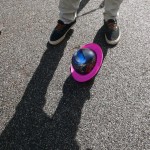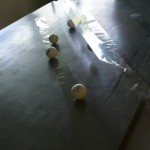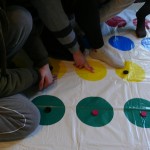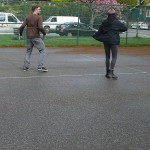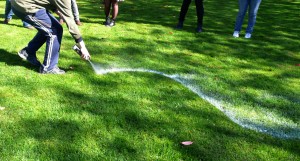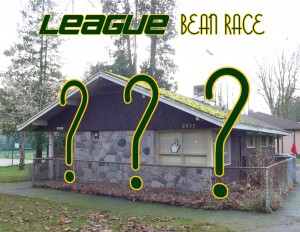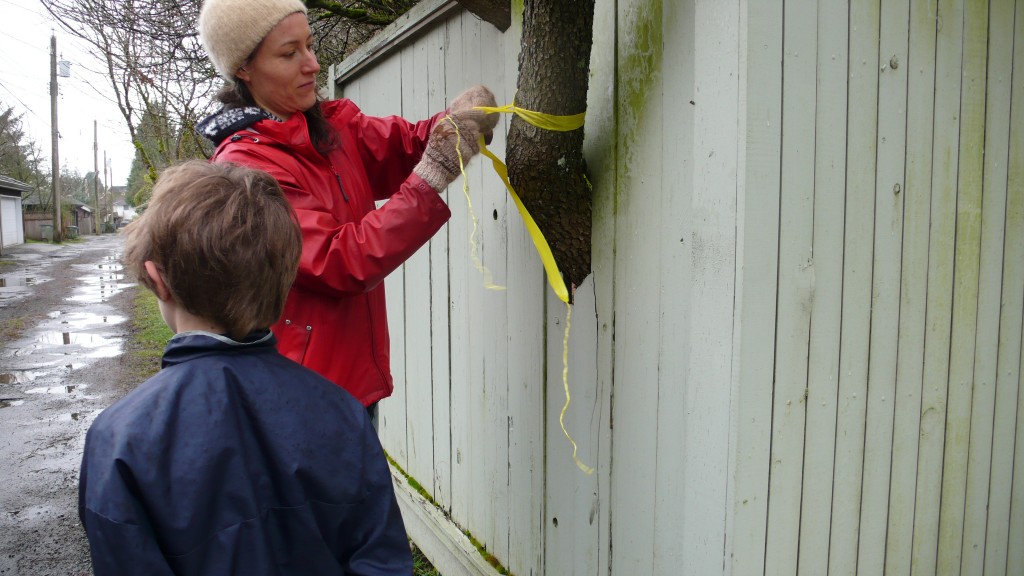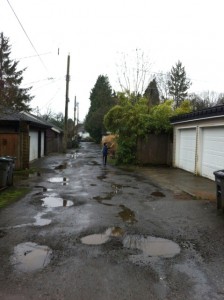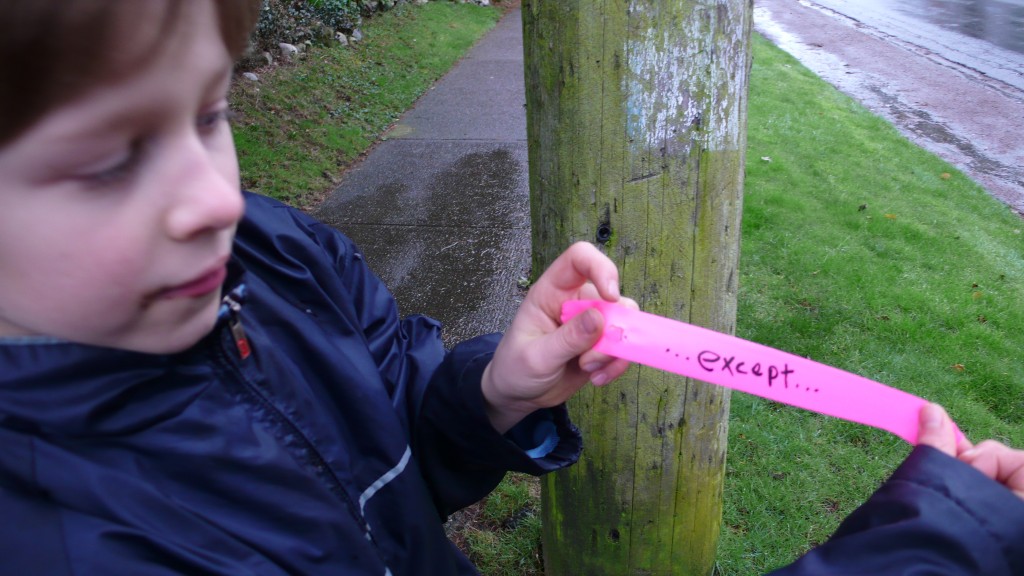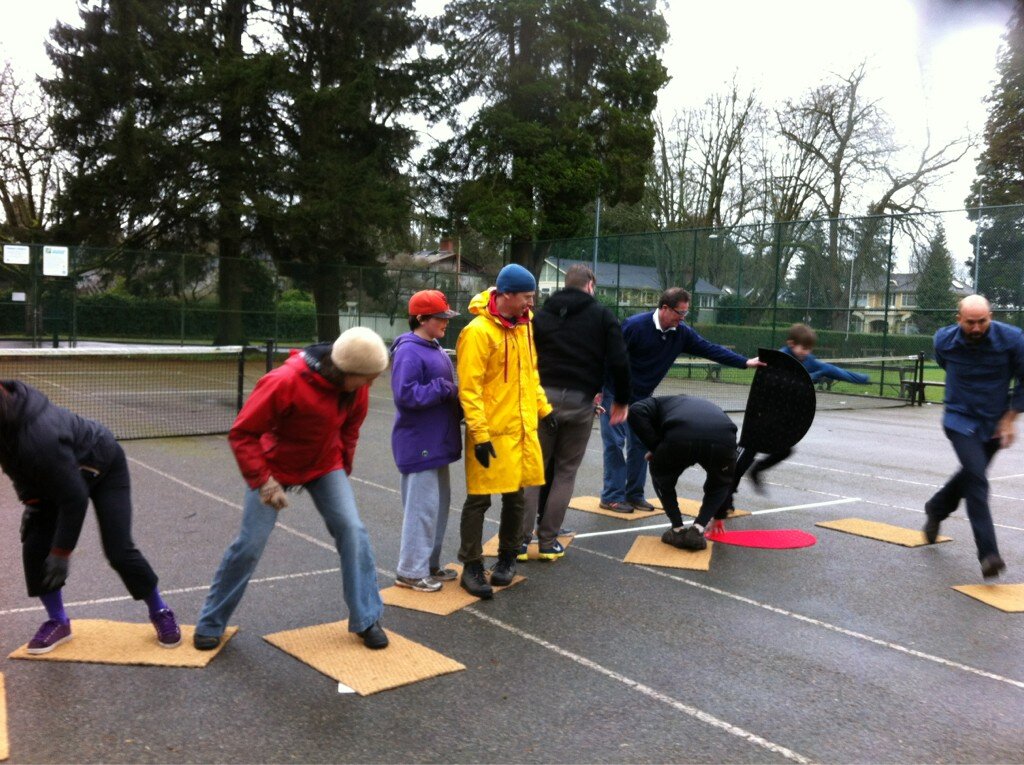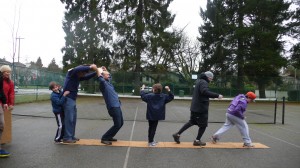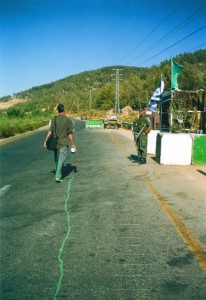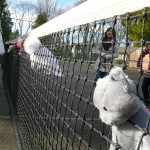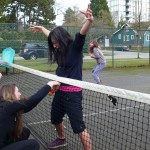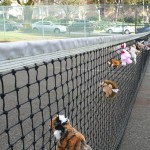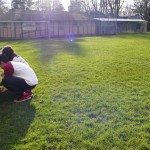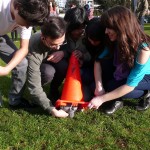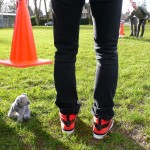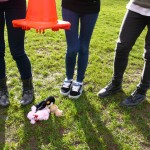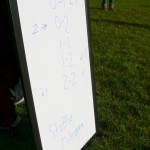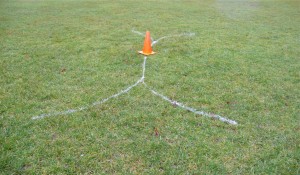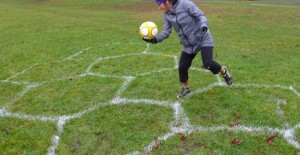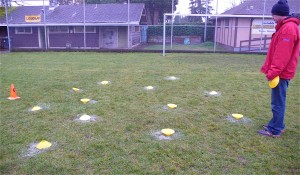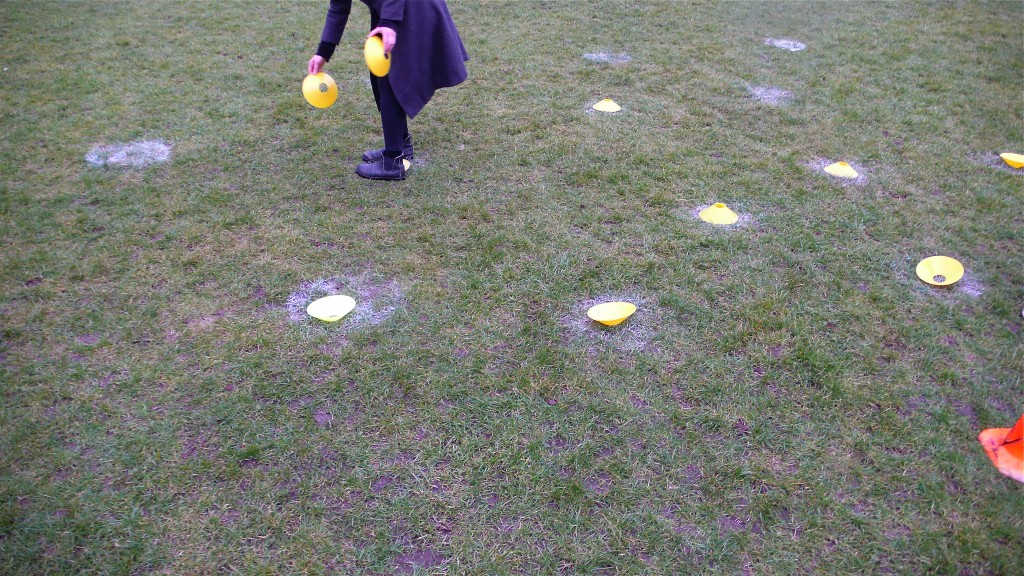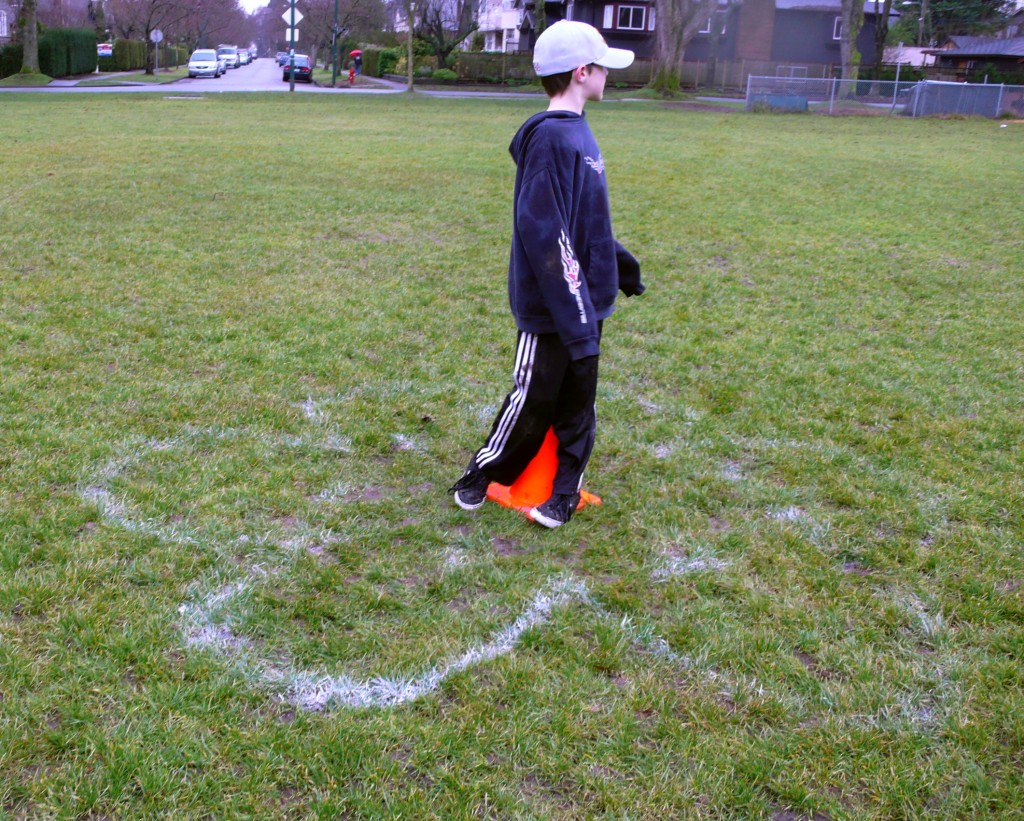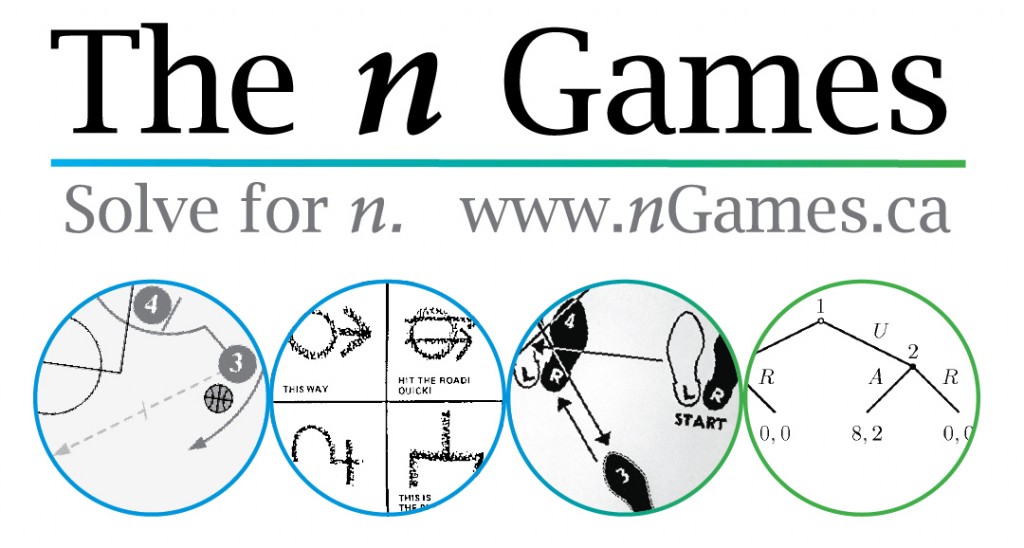
Where: Elm Park, Vancouver-Kerrisdale
When: Sunday 8 September 2013, 10am-5pm
Cost: Free. Spectators are welcome to bring a lawn chair or blanket
Solve for n
The n Games is an innovative tournament for teams from different backgrounds. It asks: what kind of team would be best prepared for unexpected challenges? A youth sports team or a finely-tuned business? A pick-up team of artists, or a leading ad agency? A performance troupe, a group of gamers, or players of obscure sports?
On 8 September 2013, different sports, cultural, and business teams from across Vancouver will compete against each other in The n Games, testing their teamwork, strategic skills and adaptability by playing invented sports they do not know. The games to be played will range from vigorous to cerebral, straightforward to strategic, and will ultimately test the teams’ ability to creatively solve different types of physical and mental challenges as a group. For some games, there may be opportunities for the teams to recruit from the public.
The tournament will take the format of two round-robin pools, followed by a playoff. The teams will not know in advance what games they will be playing; for each match, the game to be played will be drawn and rules explained a matter of minutes before the start. The tournament unfolds in Elm Park and is organized by League, a project for playing invented games and sports, launched in 2012 within the Vancouver Park Board Field House Residency Program. The n Games and League value play as a form of creative problem-solving, unconventional approaches to challenges, and tackling situations with both mind and body. Examples of the types of invented sports that could be played at The n Games are documented on the League site.
Competing for The n Games Cup, playfully devised by celebrated contemporary artist Brendan Lee Satish Tang, the participating teams represent a wide range of businesses and sports in the city of Vancouver. The award-winning advertising agency Rethink bring their nimble creativity to the field, while veteran game producers Roadhouse Interactive boast a deep knowledge of game strategy. Double Rainbow Dodgeball League, a community-based dodgeball league for all genders, hope to outshine the competition with their bright combination of agility and rainbow spandex, while Manhunt! Vancouver bring crafty tactics honed through their urban sports events. The friends behind the Daughters of Beer craft-beer blog have assembled a team of fellow cultural administrators and curators to bring their self-described “over-thinking skills” to the tournament. Finally, with their focus on creating theatre from the everyday life around us, Theatre Replacement, bring well-practiced performance skills.
Teams
 Daughters of Beer & Co.
Daughters of Beer & Co.
http://daughtersofbeer.tumblr.com
We are creators, competitors, curators, coordinators, commissioners, consultants, cultural planners, and cat owners – who share a common connection as capacious consumers of craft beer.
Special skills: strategic and easily distracted; over-thinkers skilled at guesswork; exhaust easily by our ambition; physical and fond of naps; overly organized for the unanticipated; competitive in non-confrontational incidents.
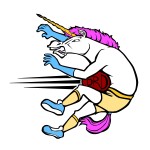 Double Rainbow Dodgeball
Double Rainbow Dodgeball
http://www.doublerainbowdodgeball.ca
Double Rainbow Dodgeball is a 19+, non profit, inclusive community dodgeball league that encourages fun, positivity, safety, fitness, inclusion, and fair play in a drug & alcohol free space. This league is for all genders and is both queer and trans positive.
.
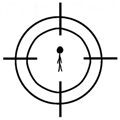 Manhunt! Vancouver
Manhunt! Vancouver
http://www.facebook.com/ManHuntVan
Manhunt! Vancouver is an organization dedicated to urban sport and games, reclaiming public space, and building an inclusive and safe casual sporting community.
At Manhunt! we play a variety of games from capture the flag, ninja chess, camouflage, sardines, dodge ball and of course, manhunt – catch us if you can.
 Rethink
Rethink
http://www.rethinkcanada.com
Rethink “has helped elevate Vancouver’s advertising scene onto the worldwide stage” (BC Business) with its work for local clients such as Playland and Science World, winning Golden Lion, Juno, and scores of other awards along the way.
Rethink uses a ping-pong table as a boardroom table, an analogy for their approach to communication.
 Roadhouse Interactive
Roadhouse Interactive
http://roadhouseinteractive.com
We make games for ourselves and others. Roadhouse Interactive is an end-to-end producer, developer and operator of games for mobile and tablet. Our team has delivered or played key roles on some of the most well-known and successful game franchises of all time.
.
 Theatre Replacement
Theatre Replacement
http://www.theatrereplacement.org
RECOGNIZE. MAGNIFY. REPRODUCE.
Theatre Replacement builds performances that react to contemporary existence.
When making this work, we recognize the accomplishments and failures of the world around us; use biographical material to magnify these events through extended collaborative processes and training programs; and reproduce the results for local, national and international audiences.
Theatre Replacement is an ongoing collaboration between James Long and Maiko Bae Yamamoto. Whether working together or apart, we use extended processes to create performances from intentionally simple beginnings. Our work is about a genuine attempt to coexist. Conversations, interviews and arguments collide with Yamamoto and Long’s aesthetics resulting in theatrical experiences that are authentic, immediate and hopeful. For The n Games, we have assembled a team of TR staff, board members, friends, and collaborators.
Press, Sponsors
Vancouver Courier preview


The n Games Toronto
League will also be presenting a version of The n Games as part of Scotiabank Nuit Blanche in Toronto, overnight on 5-6 October 2013.
